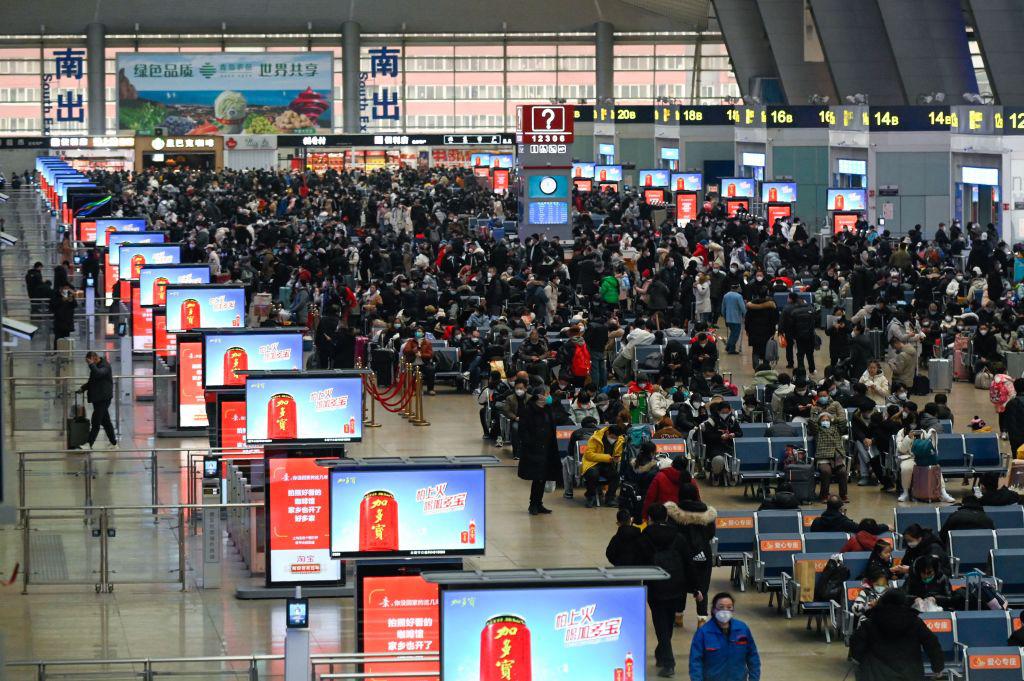Daily Memo: Airlines’ Reintegration Of China Will Take Some Time

The start of 2023 brought the news the global aviation industry had been waiting for: after months of waiting, China’s government finally lifted COVID-19 restrictions, paving the way for the country to reopen to international travel.
But European, North American and other airlines wanting to build back up their activities to and from China face some significant hurdles—not least the ongoing restrictions on Russian airspace because of the Russia-Ukraine war. A much-criticized new round of travel requirements for passengers from China may also temper their optimism.
The Chinese government’s decision to remove quarantine requirements and lift a cap on international flights is obviously good news for an industry that recovered strongly in 2022 and has been waiting with bated breath for this last key market to reopen once again. But while Chinese airlines have been rapidly restoring capacity, European carriers are taking a cautious approach.
Lufthansa Group said it welcomed the Chinese authorities’ decision. “This will help international air traffic between mainland China and Europe to recover,” a spokesperson said. “Based on the current development, Lufthansa Group will review to what extent or in which period it can adjust its flight schedule to and from Mainland China accordingly.” But no decisions have been made, the spokesperson added.
Air France restarted flights to and from Hong Kong Jan. 9, with three flights per week and plans to increase its frequencies to Shanghai from two to three per week in February. But those changes to the French airline’s schedule had already been announced before the Chinese government’s decision. “We are studying the possibilities for adapting this summer’s schedule,” an Air France spokesperson said.
“While concerns persist, we continue to see the case for a further European traffic recovery given the base effect, pent-up leisure/business demand, and China/Japan traffic restoration,” UBS analyst Jarrod Castle wrote in a Jan. 13 research note. While he noted that European traffic should reach 89-92% of 2019 levels in 2023, he added: “Nevertheless, the flag carriers could see upside risk should pent-up Chinese and Japanese demand come through.”
Leading African carrier Ethiopian Airlines, which operated 35 flights a week to five Chinese destinations before the pandemic, is also starting to ramp back up. Starting Feb. 6, it will operate daily Addis Ababa-Guangzhou flights, with up to 10 flights per week from March, and it is also adding back frequencies to Beijing, Chengdu and Shanghai Pudong, for a total of 28 flights per week.
For those airlines wishing to return to Chinese destinations, or increase frequencies, the restriction on Russian airspace will pose a major hurdle, adding significant extra flight time and costs to their routes.
The effects of the Russian airspace closure since the invasion in February 2022 have been masked somewhat by the ongoing limitations on travel to and from China. But now that flying to and from China is once again a possibility, those constraints are going to come into sharp focus for European airlines.
Finnair, which has been forced to drastically rethink its former business model as a result of the airspace closures, said it is now flying twice a week to Shanghai, with the restriction on Russian airspace adding about 40% to the flight time to China.
“Increasing the number of flights is influenced not only by demand, but also by how China frees up capacity and grants permission to fly to different airports,” a Finnair spokesperson said. “We expect the demand for flights between Finland and China to increase when travel restrictions in China are eased. During the COVID-related restrictions, our China flights mainly carried business travelers from China to Europe. With the easing of travel restrictions, leisure travel is also expected to increase during the spring and especially during the summer.”
Travel analytics company ForwardKeys said outbound flight bookings between Dec. 26 and Jan. 3 jumped 192% compared to the same period a year prior. The most popular return trips for travel-starved Chinese passengers are to Abu Dhabi, Bangkok, Dubai, Frankfurt, Hong Kong, Macau, Seoul, Singapore, Taipei and Tokyo. And 67% of those bookings were for travel during the peak Chinese New Year period.
The bookings during those dates remained 85% behind pre-pandemic levels, ForwardKeys said, noting that bookings to Abu Dhabi, traditionally a major gateway between China and the West, were 51% behind 2019.
“Although Chinese New Year is likely to see international travel rebound for the first time in three years, we will need to wait longer before we see a resurgence in Chinese tourists exploring the globe,” Olivier Ponti, VP Insights, ForwardKeys, said. “The reasons are: First, current scheduled international flight capacity is only at 10% of 2019’s level; and owing to approval requirements for traffic rights and airport slots, it will be difficult for airlines to gear back up in less than a few months. Second, ticket prices remain high, with average air fares in December 160% higher than in 2019. That said, there has been a downward trend since June, when quarantine was reduced from three weeks to seven days, and then to five days in November.”
The reactions of European and other governments won’t help with that recovery—or at least that’s what the airlines believe. Many individual governments, including France, Spain and the UK, imposed testing requirements on passengers from China.
“It is extremely disappointing to see this knee-jerk reinstatement of measures that have proven ineffective over the last three years,” Willie Walsh, director general of the International Air Transport Association (IATA) said Jan. 4. The following day, the European Union said it too was recommending that Member States should introduce testing requirements for arrivals from China.
Ponti also noted: “A bottleneck processing passport renewals and visa applications is likely. Right now, we expect the Chinese outbound market will pick up strongly in Q2 2023, when airlines schedule capacity for the spring and summer, which include the May holiday, Dragon Boat festival in June and summer holidays.”
